Rashid Syunyaev: ''Intelligent life can exist somewhere in our galaxy''
Interview with the famous Soviet and Russian astrophysicist, part 2: about Russian education, launch of space observatory, Russian-Turkish telescope and livable planets
Today it is unreal to create a human colony on Mars, though probably there are livable planets in the universe, thinks famous astrophysicist Rashid Syunyaev who recently visited Kazan. In the second part of the interview to Realnoe Vremya's reporter, the scientist shared his opinion about Russian education, told about a space observatory that is prepared for launch, Russian-Turkish telescope and liveable planets.
''We had an excellent school''
Mr Syunyaev, our people often tell modern Russian education off. They also have a dig at Soviet education. What role do schools play now?
I remember all my teachers and especially thank those whose lessons were interesting and who were not kind but encouraged a healthy competition between pupils in the class, knew how to divide the class by skills and give each group interesting and tasks that were deliberately chosen for the level of these pupils. I was lucky, we had such a math teacher in secondary school. It helped me to become one of the two winners of the math olympiad of Middle Asia and Kazakhstan and then enter the Moscow Institute of Physics and Technology.
In 2012, I was awarded a medal in Physics named after Benjamin Franklin. It is one of the most prestigious awards in the USA for achievements in science. It is given in seven different disciplines of fundamental science. Vladimir Vapnik who also worked in one of the institutes of the USSR Academy of Sciences and offered the first machine learning algorithm in the world together with Aleksey Chervonenkis, which allows computers to gain experience and learn, got the same Benjamin Franklin Medal in Computer Sciences and Cognitivism (Editor's Note: a scientific discipline that unites epistemology, cognitive psychology, neurophysiology, cognitive linguistics and artificial intelligence theory) at the same time with me. Now such algorithms are widely used in science (big data, machine mining), engineering, finance, they have a wide range of applications. Of course, we acquainted during the award. It suddenly turned out that we graduated from the same school – No. 18 in Tashkent. But future professor Vapnik went there in the toughest year of 1943, when I was born, and graduated from it in 1953 when I was in the third grade. We remembered our favourite teachers. It turned out we remembered the same teachers – those who really taught. We decided we had an excellent school. Famous astronomer and jazzman, Moscow State University professor Erik Dibay told me that he studied with future writer Vasily Aksyonov, academic Roald Sagdeyev and many other brightest people whom citizens of Kazan know better than me almost at the same time at his school in Kazan.
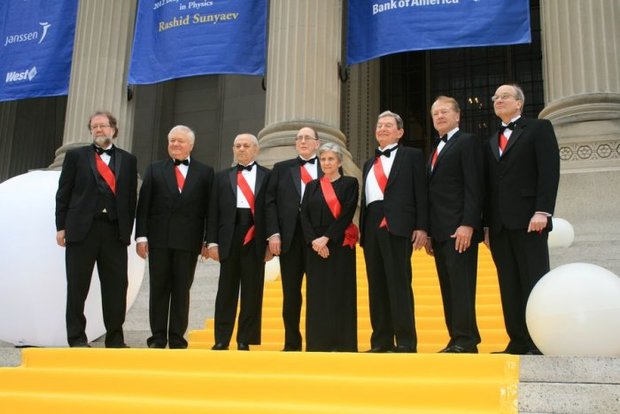
I can be proud of that I lived in the same hall of residence of the Moscow Institute of Physics and Technology in Dolgoprudny near Moscow as well as Nobel Prize winners, now Sir Andrey Geim and Sir Konstantin Novoselov. It is sad to remember but Andrey Geim who has German roots managed to enter the Moscow Institute of Physics and Technology only at the second attempt to due to his origin (like it is written everywhere).
This hall of residence had many wonderful guys who came from all the parts of the Soviet Union. A big part of them became noted scientists, members of the Russian Academy of Sciences, famous among all the professionals in their scientific area. It is a pity that a part of them found a use of their talents only in the West or in Japan.
I find it difficult to answer your question about the modern situation at Russian schools: my kids grew up a long time, my grandchildren are young. Only Aliya goes to a school that is next to home among my three Moscow granddaughters. She loves her teacher, her class and studies with pleasure.
''Both telescopes are ready for launch''
Is it true that you arrived in Kazan late at night and gave a lecture at the Kazan Federal University at 11 a.m.?
Yes, I think it is my duty to give reports in seminars with lectures of different topics at every university of the city I visit for some reason and where there are professionals and students who are interested in astrophysics, cosmology or theoretical physics. I do it with special pleasure in Kazan and Tashkent where there are famous schools of astronomers working for more than 150 years. The goal of my 1,5-hour report in the Department of Astronomy and Space Geodesy of the KFU was to draw the attention of students, PhD students and young scientists as well as their professors and teachers to opportunities that open to Russian astrophysicists due to the launch of Spectrum-Roentgen-Gamma orbital space observatory scheduled for September 2018.
Could you tell about this project in detail?
The observatory has two X-ray telescopes. One of them is eROSITA with optics of oblique incidence that was designed and created in Germany (it is the best telescope that Europe can offer today) and ART-XC that was born and created in the Russian Space Research Institute of the Russian Academy of Sciences, designed and assembled in the All-Russian Federal Nuclear Centre — All-Russian Research Institute Of Experimental Physics in Sarov where my mentor, three-time Hero of Socialist Labour, academic Yakov Zeldovich worked. ART-XC is sensitive to harder X-rays than eROSITA. Both telescopes are ready for launch and now are in the finishing halls of the famous Lavochkin Research and Production Association in Khimki near Moscow where they are integrated with the satellite and necessary tests and trials continue. Systems of the satellite and telescope need to be able to ''speak'' and ''understand'' each other.
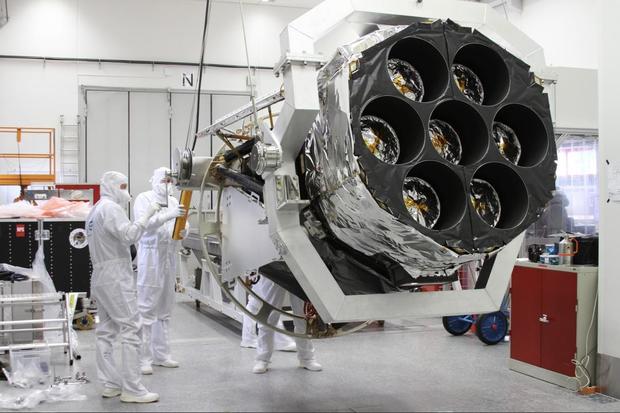
Even if it is not quite the subject, my mentor, academic Yakov Zeldovich worked with other famous Soviet physicists during the toughest years of the terrible war from late 1941 to 1943 in Kazan when the Institute of Chemical Physics of the USSR Academy of Sciences was back from evacuation and not to Leningrad but Moscow. During one of the visits to Kazan, he showed me a place in the event hall of the Kazan Federal University where his family with two little daughters, his parents and sister lived in a small area that was fenced with curtains. It is difficult to imagine but, as far as I remember, 26 families of scientists who were evacuated from besieged Leningrad lived in this not very big event hall. Among them, there were people of such a class as Yuly Khariton (very Lord Rutherford and discoverer of neutron Chadwick's pupil) who consequently also became a three-time Hero of Socialist Labour and senior designer of our first nuclear bomb and many other samples of the nuclear weapon. I remember how Zeldovich showed me a place on the floor of the hall where his father died who was buried in the Arsk Cemetery of Kazan.
It is planned that our satellite will be scanning the sky for 4 years and it will need to create eight independent maps of all the sky in X-rays (a map per 6 months) with quite a good angular resolution ( about 20 angular seconds). Our telescopes are 10 times more sensitive than the previous ones. And we hope that they will discover and feature almost all the galaxy clusters (they are about 100,000) in the universe on the map. They are the biggest objects in our universe, each of them has hundreds and even thousands of galaxies, hot (from 10 to 100 million degrees) intergalactic gas and a big number of the black matter that shows itself with its gravitation but doesn't cooperate with the normal baryonic matter and radiation in another way. The gigantic gravitation field of these galaxy clusters passes trajectories of light photons. As a result, they serve as gigantic lenses and allow astronomers to observe extremely remote galaxies whose light is intensified by GraviLens to the sensitivity level of the biggest telescope on earth or in orbit.
We hope to feature the situation of about 3 million supermassive black holes (with a weight of from a million to a billion of solar masses) on the map by establishing the radiation of accretion disks where gas flows that are absorbed by black hole revolve around it and gradually move to the gravitation centre because of friction by emitting heat radiated by the disc in both X-ray and optical rays. Thisse black hole has a good appetite: to become visible at gigantic distances, they need to absorb such an amount of gas that is comparable with the weight of the Moon or even the entire Earth every second.
Our telescopes enable to follow hundreds of thousands of stars in our galaxy (very young stars and in the prime of the life like our Sun but that revolve fast and have a brighter crown and X-rays flashes are bigger and brighter than our Sun). We hope we will be able to follow the pace of appearance and growth of galaxy clusters and supermassive black holes as time goes by, which is very important for cosmology and specification of the main parameters of our universe.
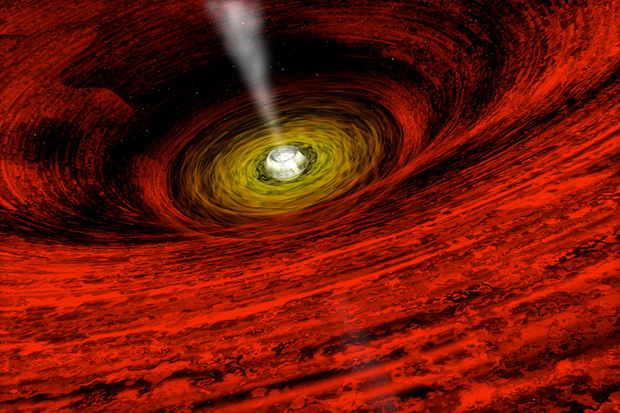
Why do we need eight independent maps of the entire sky?
First of all, we will sum them then and get a more sensitive map. Secondly, they will enable us to follow the variability of the X-ray sky, look for afterglows of the brightest gamma-ray bursts and fix the cases when supermassive black holes burst a star that too closely flies it by because of a tidal interference. A big part of the formed gas is captured and absorbed by the black hole. And we can observe this process seeing an X-ray source that unexpectedly became very bright. Estimates of PhD student of the Russian Space Research Institute of the Russian Academy of Sciences Ildar Khabibullin who came from Bashkortostan to Moscow to study showed that eROSITA telescope has a chance to see hundreds of such sources that flash for months or years during 4 years of sky scanning.
Why did you choose right this topic for your lecture in Kazan?
The main goal of my lecture for astronomers and physicists of the Kazan Federal University was to demonstrate older students and PhD students, physicists and astronomers, applied mathematicians that they have a chance to join the processing, analysis and interpretation of the huge flow of data from the Russian satellite equipped with modern X-ray telescopes in case of successful launch of Spektr-RG observatory.
Corresponding member of the Russian Academy of Sciences, professor of the University of Amsterdam and leading research fellow of the Russian Space Research Institute of the Russian Academy of Sciences Marat Gilfanov is going to come to Kazan at the beginning of September. Marat was born and graduated from a school in Kazan. Now he is a bit older than 50 years. It is an excellent age when the person has completely formed as a scientist, teaches the young (more than 10 PhD students defended their theses under him). At the same time, he actively works himself. Marat is famous around the world not only as a theoretical astrophysicist but also as one of the experts in analysing space observatories. I hope he will give several lectures in the Institute of Physics of the Kazan Federal University and the astronomy department. We will be glad if an active work also in space astrophysics starts in Kazan. Academic of the Tatarstan Academy of Sciences Nail Sakhibullin created an excellent school of stellar astrophysics at the KFU. This group at the KFU has been having 35% of the observation time for 20 years already on a 1,5-metre optical telescope (at a height of 2,500 metres, the mountain of Bakırtepe) 50 km far from Antalya in Turkey above the road where very Alexander the Great led his army to Persia and India. Now we try to purchase a modern CCD for the spectrometer of this telescope to substitute the part that has worked for 7 years already. It is important for all of us that KFU astrophysicists participate in the programme of terrestrial support of Spektr-RG satellite's observation together with other Russian observatories. We dream that the most interesting and unusual millions of X-ray sources that open while observing all the sky will be immediately seen from the Earth in optical and radio-frequency ranges to help to find out the nature of these objects.
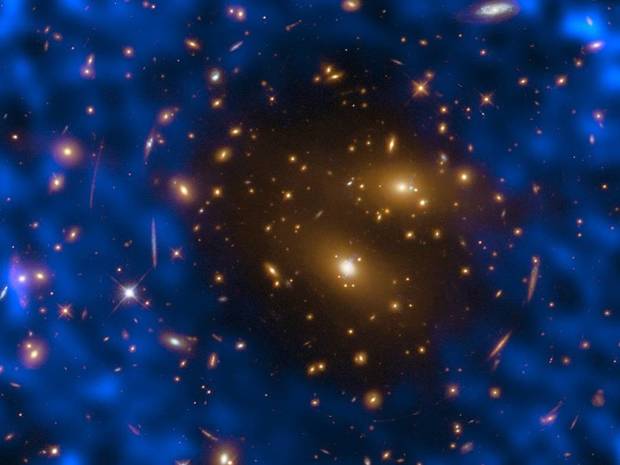
''Intelligent life can exist somewhere in our galaxy''
Do searches for liveable planets continue?
Our country traditionally does research of Venus and Mars. Now it returns to research the Moon with the help of spacecraft. It all is important and very interesting. But interest in research of characteristics of planets near other stars is growing in advanced countries.
Looking for life in other worlds is a more ambitious task! Having spent by far less money, scientists of the USA, France, Switzerland have achieved incredible results in the last 20 years. They discovered thousands of planets near other stars. Only 20 years ago, people just talked that another life could exist. Today we see planets that are located in the so-called habitable zone. It is easy to evaluate the distance of the snow line from a star, so that the planet has both winter and summer. In other words, scientists look for planets with atmosphere, water, gravitation and even seasons of the year like on the Earth. And there have already been found tens of such planets. They are far – it is impossible to reach them now. But it is important that they exist. We need to think globally! It is a pity that Russia falls behind in this research because it invested its money to study only the Solar system planets. Although it is also important, of course.
Now the scientists working with data from American Kepler, Hubble satellites and many terrestrial telescopes in China, on the Hawaii Islands, in Europe have discovered 3,639 planets, including 612 systems where two or more planets have been discovered in each one. I easily give such accurate figures here because the International Astronomical Union registers all the true new discoveries of exoplanets and gives their accurate number on Wikipedia. Almost every star that is the closest to us has planets. One in five of thousands of the closest stars like our Sun is likely to have at least one planet whose size is similar to that of the Earth and that is located at such a distance from the star, so that life in the simplest form can exist on this planet, in general, if there is water, oxygen and other necessary conditions for life. So billions of planets that could have a life at some stage of evolution can exist in all the galaxy. It is a pity that our scientists fall behind in research of exoplanets (planets near other stars) because of the absence of access to the best telescopes of the world.
It is pleasant for me to note that a group of astronomers where corresponding member of the Academy of Sciences of Tatarstan, KFU professor Ilfan Bikmaev is in has recently discovered another exoplanet revolving around the star, the red giant, at a distance of almost 900 light years from us that had been unknown by using the Russian-Turkish 1,5-metre telescope. The weight of this exoplanet is much more than the weight of our Earth and is comparable with the weight of Jupiter. I think I am not revealing a big secret because the article has already been published. But it will be better if the very discoverer tells about it you in an interview.
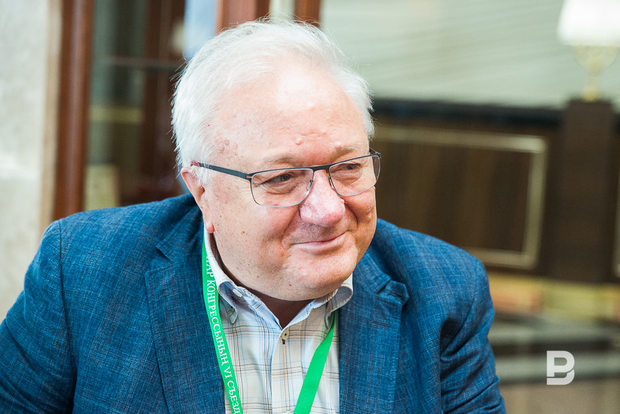
Now the scientists working with data from American satellites Kepler, Hubble and many terrestrial telescopes in China, on Hawaii islands, in Europe have discovered 3,639 planets, including 612 systems where two or more planets have been discovered in each one
The information that we are unlikely to be alone in this world is important for scientists (and for humankind, in general). Now we are sure that intelligent life can exist somewhere in our galaxy (while there are billions of galaxies in the observed universe). It took billions of years to develop it (a shift from bacterium to plants and animals) at an early stage on the Earth. History of humankind shows that it takes millions of years to switch from apes to modern humans and only tens of thousands of years to switch from tribes of hunters and collectors of roots to farming and domestication. And the era of electricity came only 150 or 200 years ago. What will humankind know and learn at such a pace in 30, 100 or even 1,000 years? It is difficult to imagine.
It is difficult to imagine a move of humankind to a planet near another star at today's development level of science and engineering. Today it is almost possible. Now it is almost real to create even a big colony on Mars. And it is completely clear why we need it today. There are many affairs on the Earth now. Nobody knows what will happen in maybe 1,000 or million years. Meanwhile, on the Earth, we have billions of years at best.
To be continued